Imagine walking into your home and being greeted by a refreshing wave of natural fragrance — not from synthetic air fresheners or candles, but from living plants that purify the air and fill your rooms with their delightful aroma. Scented houseplants do exactly that. They not only uplift your mood with their fragrance but also improve indoor air quality by filtering out toxins and releasing oxygen.
Whether you’re looking to create a calming, spa-like atmosphere or simply want your home to smell as good as it looks, growing scented houseplants is one of the best ways to bring freshness indoors. In this article, we’ll explore the best fragrant indoor plants, their unique benefits, and practical care tips to help you enjoy a healthy, naturally aromatic home.
1. Why Choose Scented Houseplants?
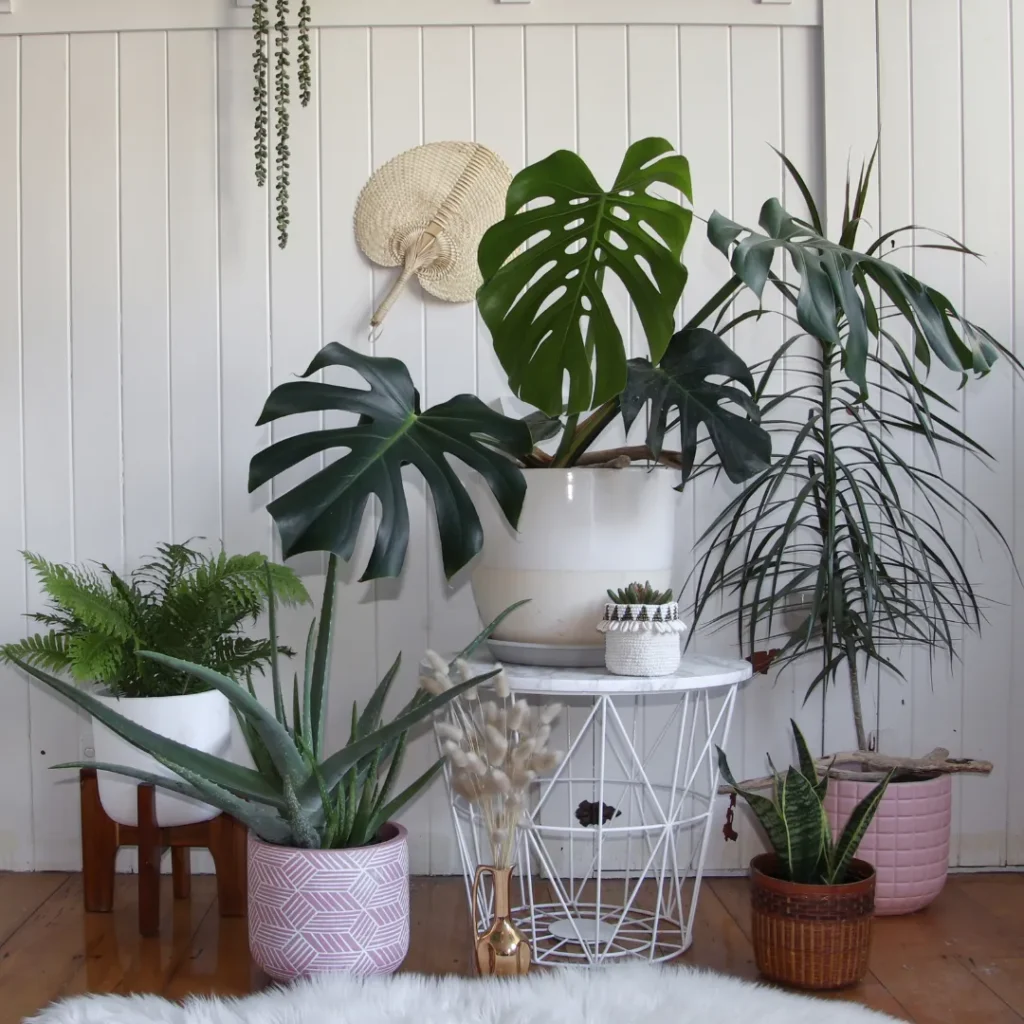
Scented houseplants do much more than just smell nice. They play multiple roles in improving both your physical environment and mental well-being.
Benefits of Scented Indoor Plants:
- Natural Air Fresheners: They release pleasant fragrances continuously, unlike artificial sprays that fade quickly.
- Air Purification: Many aromatic plants remove toxins such as formaldehyde, benzene, and xylene from indoor air.
- Stress Relief: Studies show that natural plant scents, such as lavender or jasmine, can reduce anxiety and promote better sleep.
- Decorative Appeal: These plants enhance home décor with their lush greenery and beautiful blooms.
- Better Focus and Relaxation: Certain fragrances like rosemary and mint help boost concentration and reduce mental fatigue.
By adding scented plants to your home, you create an environment that’s visually soothing, mentally calming, and physically healthier.
2. The Best Scented Houseplants for a Fresh Home
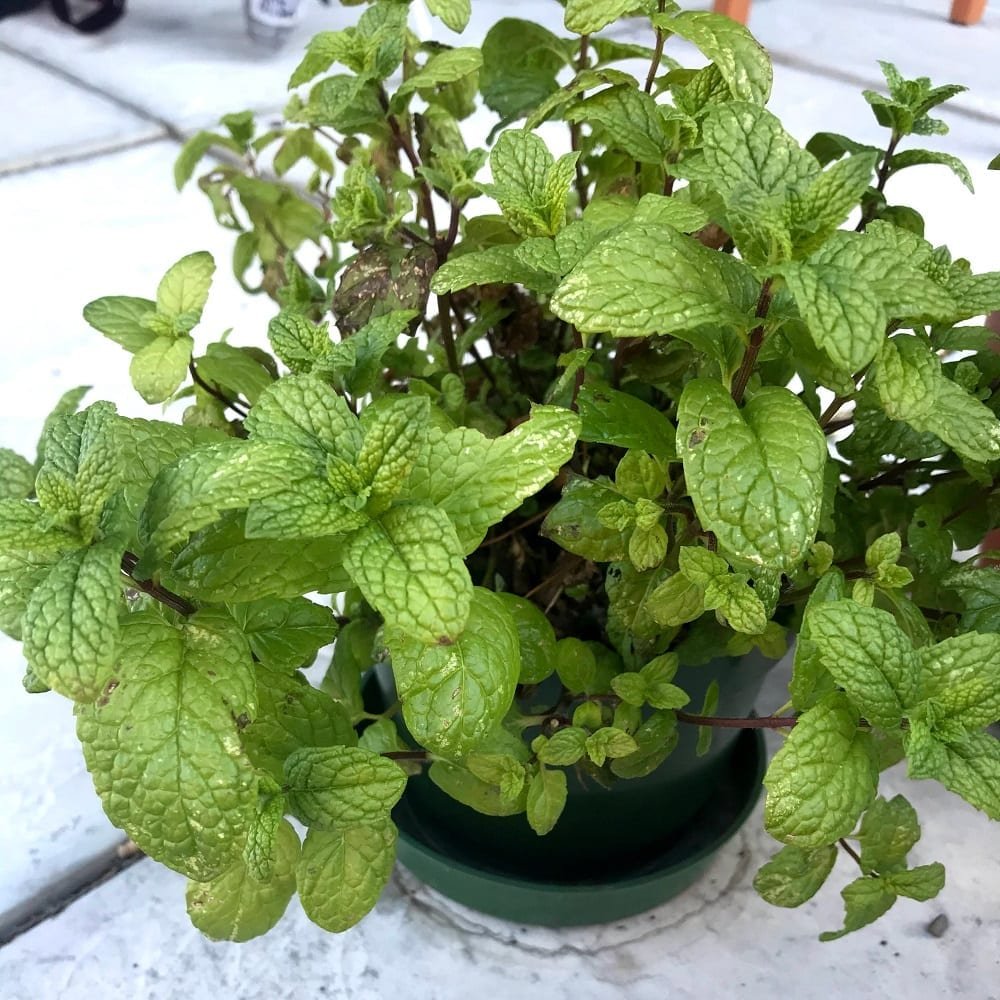
Here are some of the top scented houseplants you can grow indoors — each with its own charm, fragrance, and care requirements.
1. Jasmine (Jasminum sambac or Jasminum polyanthum)
Fragrance: Sweet, floral, and exotic.
Best for: Bedrooms and living rooms.
Light: Bright, indirect sunlight.
Water: Keep soil evenly moist.
Jasmine is one of the most beloved fragrant plants in the world. Indoors, Arabian Jasmine (Jasminum sambac) or Pink Jasmine (Jasminum polyanthum) are excellent choices. Their small white flowers release a luxurious perfume, especially in the evening.
Jasmine thrives in bright light and high humidity — perfect near sunny windows. The scent is calming and is known to help reduce stress and improve sleep quality.
2. Gardenia (Gardenia jasminoides)
Fragrance: Rich, creamy, and intoxicating.
Best for: Bedrooms or reading corners.
Light: Bright, indirect light.
Water: Keep soil moist but not soggy.
Gardenias are famous for their glossy green leaves and white blooms that fill the air with a luxurious perfume. Though slightly fussy to grow, their beauty and scent are worth the effort. Keep the plant in humid conditions and feed it regularly with acidic fertilizer.
Gardenia’s fragrance evokes peace and nostalgia — ideal for relaxation zones or bedrooms.
3. Lavender (Lavandula angustifolia)
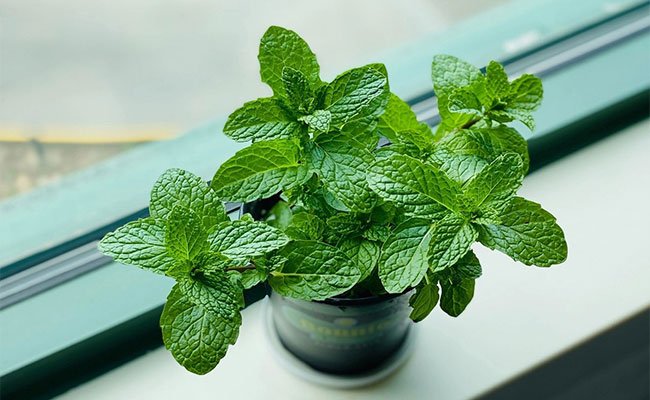
Fragrance: Herbal, sweet, and calming.
Best for: Bedrooms, bathrooms, or workspaces.
Light: At least 6 hours of direct sunlight.
Water: Allow soil to dry between watering.
Lavender is a timeless favorite for its soothing scent. It helps promote better sleep, reduce anxiety, and even repel insects. English Lavender (Lavandula angustifolia) grows well indoors with sufficient light.
Place it on a sunny windowsill and prune regularly to encourage bushy growth. Its subtle purple blooms will brighten up your home while keeping the air fresh and clean.
4. Eucalyptus (Eucalyptus gunnii or Eucalyptus cinerea)
Fragrance: Fresh, minty, and invigorating.
Best for: Bathrooms or home offices.
Light: Bright light with good airflow.
Water: Moderate watering; avoid waterlogging.
Eucalyptus releases a refreshing, medicinal aroma known for clearing sinuses and improving focus. The silvery-green foliage adds a modern, minimalist look to interiors.
Though it can grow tall outdoors, small potted eucalyptus plants can thrive indoors when pruned regularly. The scent is excellent for cold relief and keeping your air feeling crisp.
5. Mint (Mentha species)
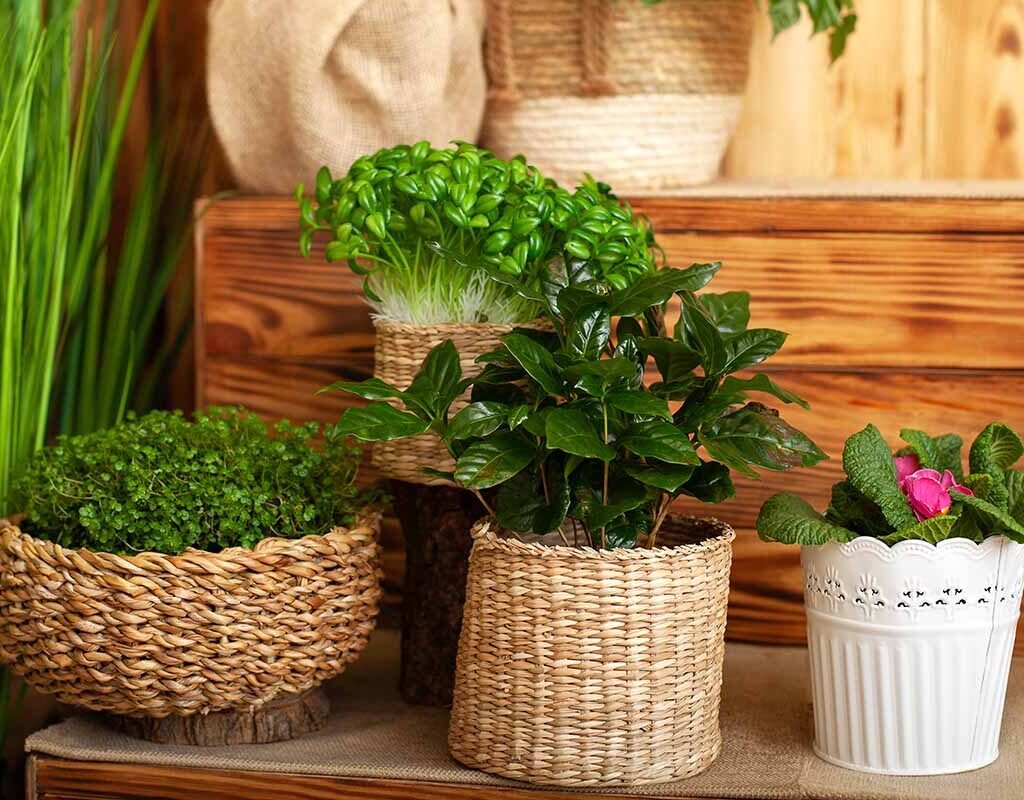
Fragrance: Cool, sharp, and energizing.
Best for: Kitchens and balconies.
Light: Bright light with partial shade.
Water: Keep soil consistently moist.
Mint isn’t just for tea — it’s also one of the most refreshing houseplants to grow indoors. Its crisp, cool aroma instantly brightens up your kitchen or dining area.
Growing mint indoors is simple — it thrives in moist soil and indirect light. Trim it regularly to keep it from spreading too much. Plus, you’ll have fresh leaves for cooking and drinks!
6. Lemon Balm (Melissa officinalis)
Fragrance: Sweet lemon with a hint of mint.
Best for: Living rooms or sunny kitchens.
Light: Bright, indirect sunlight.
Water: Moderate; don’t let soil dry completely.
Lemon balm is both aromatic and edible, known for its uplifting citrus scent and calming properties. Its leaves can be used for herbal teas or homemade infusions.
This easy-to-grow herb not only smells wonderful but also helps improve air freshness and mood naturally.
7. Hoya (Hoya carnosa or Wax Plant)
Fragrance: Honey-like, floral, and slightly spicy.
Best for: Bedrooms or hallways.
Light: Bright, indirect light.
Water: Water when top soil dries.
Hoyas, often called Wax Plants, produce clusters of star-shaped flowers that smell strongest in the evening. The scent is a mix of honey and vanilla with a tropical touch.
They’re low-maintenance and ideal for hanging baskets or shelves, adding both fragrance and visual elegance to your home.
8. Citrus Plants (Lemon, Lime, or Calamondin Orange)
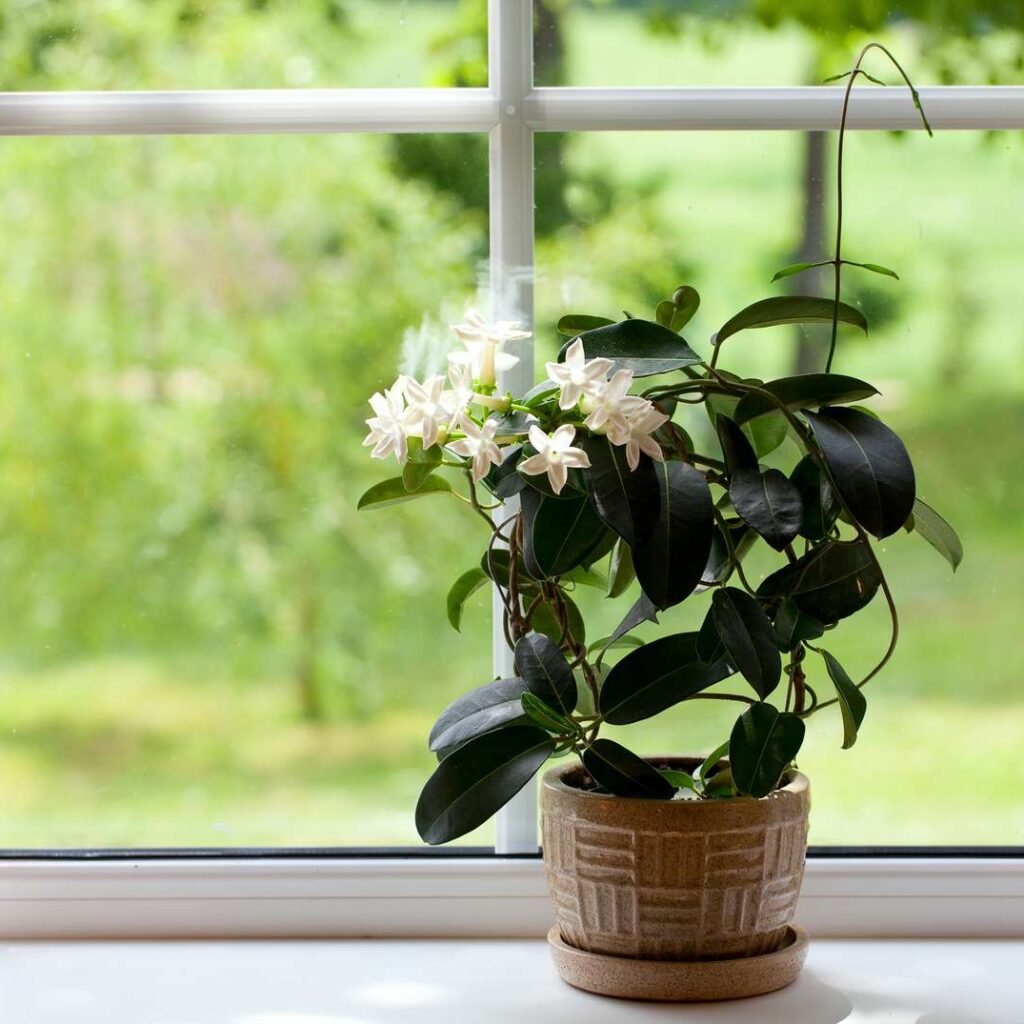
Fragrance: Fresh, zesty, and energizing.
Best for: Sunny living rooms or patios.
Light: 6–8 hours of direct sunlight.
Water: Regularly, allowing soil to dry slightly between waterings.
Miniature citrus plants, such as Calamondin Orange or Dwarf Lemon, are excellent indoor options. The glossy leaves and small, fragrant blossoms fill your home with a tangy, invigorating scent.
Beyond fragrance, these plants occasionally bear small fruits, adding a decorative and edible bonus to your indoor garden.
9. Rosemary (Rosmarinus officinalis)
Fragrance: Earthy, pine-like, and uplifting.
Best for: Kitchens and study areas.
Light: Full sun (at least 6 hours).
Water: Let soil dry slightly between watering.
Rosemary is both aromatic and practical. Its crisp, woody scent improves alertness and memory, making it perfect for study areas or kitchens.
It prefers a bright, warm location and well-draining soil. Occasional pruning helps it stay compact and bushy — and you can use the trimmings for cooking!
10. Scented Geranium (Pelargonium graveolens)
Fragrance: Varieties smell like rose, lemon, or mint.
Best for: Sunny living rooms or patios.
Light: Full sunlight or bright indirect light.
Water: Moderate watering; avoid soggy soil.
Scented geraniums are charming and versatile, available in many varieties — each with its unique aroma. Their fragrant leaves release scent when brushed, filling your home with freshness.
They’re also easy to propagate, making them ideal for expanding your indoor plant collection.
3. How to Care for Scented Houseplants
To keep your aromatic plants thriving and fragrant, follow these simple care guidelines:
Provide Adequate Light
Most scented plants need bright, indirect light to produce oils responsible for their aroma. Place them near sunny windows or under grow lights if natural light is limited.
Water Wisely
Overwatering is a common mistake. Always check the soil’s top layer before watering. Herbs like mint and lemon balm love moist soil, while lavender and rosemary prefer drier conditions.
Maintain Good Airflow
Proper ventilation prevents fungal growth and keeps scents circulating. Open windows or use small fans to mimic natural airflow.
Control Temperature and Humidity
Keep your home between 60–75°F (15–24°C). Avoid placing plants near air vents, heaters, or cold drafts.
Prune Regularly
Trimming promotes new growth and keeps your plants bushy. For herbs, pruning also helps release more fragrance.
Use Well-Draining Soil
Most fragrant plants dislike standing water. Use a light potting mix with perlite or sand for good drainage.
4. Creating a Fragrant Indoor Oasis
You can combine several of these plants to create a layered, aromatic indoor garden. For example:
- Place lavender and rosemary in sunny spots.
- Keep jasmine or hoya near windows.
- Add mint or lemon balm in the kitchen for instant freshness.
- Place gardenia or citrus plants in the living room for elegance and scent.
Mixing different fragrances creates a balanced, dynamic aroma that evolves throughout the day — floral in the morning, citrusy at noon, and soothing at night.
5. The Emotional Power of Plant Scents
Scents have a profound impact on emotions and memory. The fragrance from houseplants like lavender, jasmine, and rosemary can:
- Reduce anxiety and promote calmness.
- Enhance focus and creativity.
- Trigger positive memories and feelings of comfort.
By incorporating these plants into your home, you’re not only decorating your space but also improving your overall well-being.
Conclusion
The best scented houseplants do more than make your home smell good — they create a healthier, more peaceful, and joyful environment. From the soothing aroma of lavender to the refreshing scent of citrus blossoms, each plant brings its own touch of nature’s magic indoors.
With just a few pots and some care, you can transform your living space into a natural perfume garden that purifies your air and uplifts your spirit every day.
So skip the artificial sprays — let your home bloom with the pure fragrance of living, breathing plants.
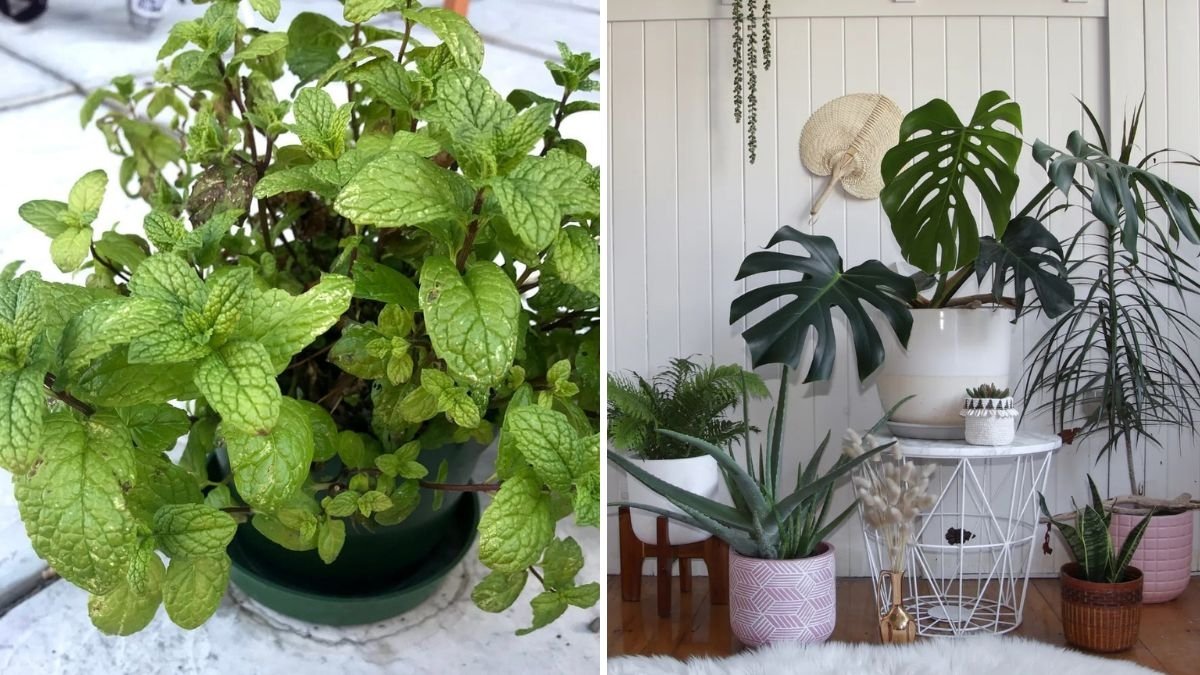




Leave A Comment